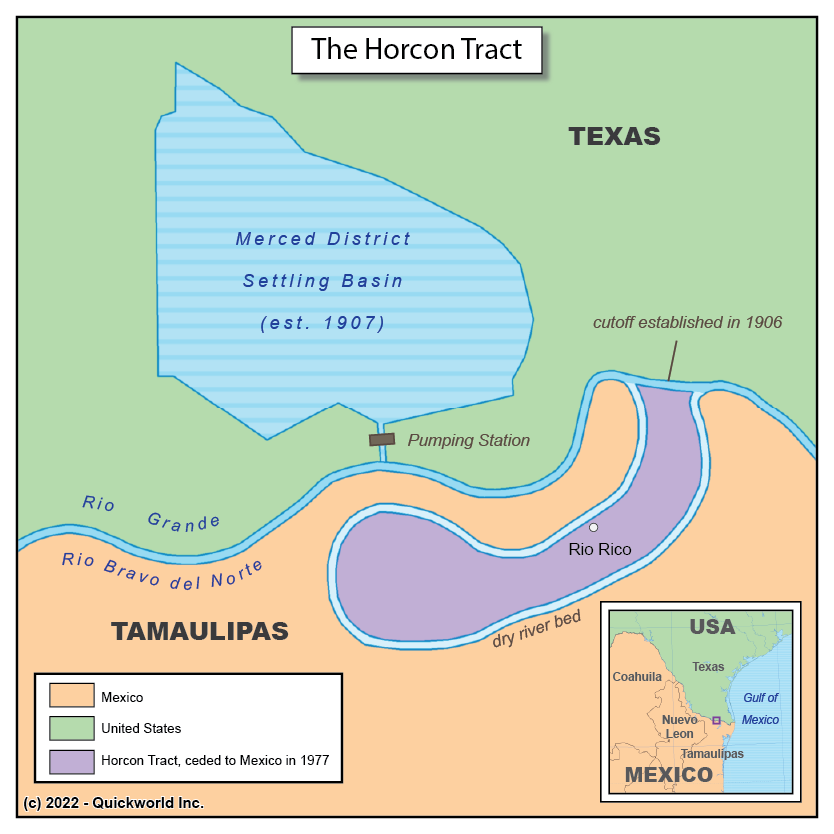The Horcon Tract is an oddity in modern history because it is a case of a human action leading to the modification of a natural border.
The course of the Rio Grande marks the border between Mexico and the United States over a length of over 1800km. The flow of the river is highly seasonal and the course changes regularly, in ways that are very curvy in some areas. Both countries agreed that changes in the course of the main channel of the river could lead to border adjustments.
The Horcon Tract is a finger-shaped land on the northern edge of the Rio Grande that is surrounded by Mexican Territory over a length of 3km. In 1906, an American irrigation company dug a shortcut into the river, effectively making the Horcon Tract an island. However, the Rio Grande flowed mostly through the new channel and the old course dried quickly, making the border between the countries over dry land and isolating the tract from the rest of the US.
The difficulty to reach the tract from the US led to a lawless zone, to the detriment of both authorities, but transfers of sovereignty are always difficult to implement and typically involve exchange of parcels. The border was modified through a 1970 treaty that granted Mexico sovereignty over the Horcon Tract along with other parcels while giving some land to the US in other areas. The transfer of sovereignty was effective in 1977.
The Horcon Tract


